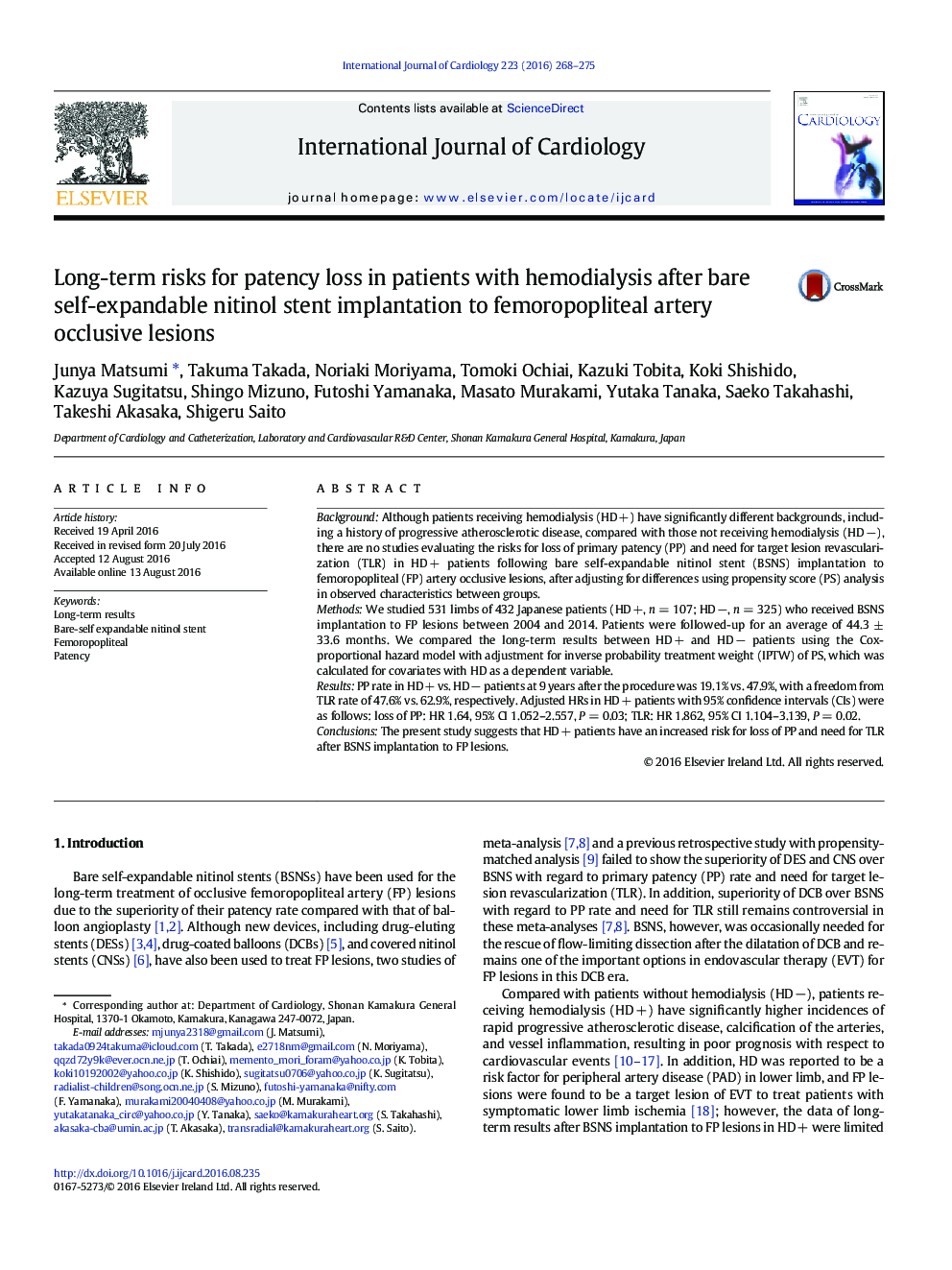| Article ID | Journal | Published Year | Pages | File Type |
|---|---|---|---|---|
| 5963112 | International Journal of Cardiology | 2016 | 8 Pages |
BackgroundAlthough patients receiving hemodialysis (HD +) have significantly different backgrounds, including a history of progressive atherosclerotic disease, compared with those not receiving hemodialysis (HD â), there are no studies evaluating the risks for loss of primary patency (PP) and need for target lesion revascularization (TLR) in HD + patients following bare self-expandable nitinol stent (BSNS) implantation to femoropopliteal (FP) artery occlusive lesions, after adjusting for differences using propensity score (PS) analysis in observed characteristics between groups.MethodsWe studied 531 limbs of 432 Japanese patients (HD +, n = 107; HD â, n = 325) who received BSNS implantation to FP lesions between 2004 and 2014. Patients were followed-up for an average of 44.3 ± 33.6 months. We compared the long-term results between HD + and HD â patients using the Cox-proportional hazard model with adjustment for inverse probability treatment weight (IPTW) of PS, which was calculated for covariates with HD as a dependent variable.ResultsPP rate in HD + vs. HD â patients at 9 years after the procedure was 19.1% vs. 47.9%, with a freedom from TLR rate of 47.6% vs. 62.9%, respectively. Adjusted HRs in HD + patients with 95% confidence intervals (CIs) were as follows: loss of PP: HR 1.64, 95% CI 1.052-2.557, P = 0.03; TLR: HR 1.862, 95% CI 1.104-3.139, P = 0.02.ConclusionsThe present study suggests that HD + patients have an increased risk for loss of PP and need for TLR after BSNS implantation to FP lesions.
